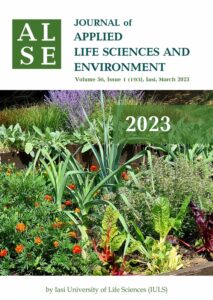Victor Shcherbakov, Vyacheslav Rudenko
ABSTRACT. The winter and spring varieties of peas (Pisum sativum) require careful study of the entire range of technological measures, including seeding rates, as the basis for optimal sowing density and the formation of phytocenose crops. This issue has not been resolved to date, not only in the context of agrobiological justification but also in everyday practice in Ukraine. This research was carried out in a field experiment in a three-way factorial experiment: factor “A” was the type of development – winter and spring; factor “B” was the variety – spring peas (Svit and Darunok Stepu) and winter peas (Moroz, Enduro and Baltrapp); and factor “C” was the seeding rate. According to the field studies, differences in the physiological and biochemical parameters of the P. sativum test culture characterised the photosynthetic activity of the plants, considering the type of development and variety. The winter varieties of P. sativum were characterised by a higher chlorophyll content (by 35–40%) compared to the spring varieties, which had an economic effect with an increase in the yield of dry biomass of the experimental crop and a decrease in seeding rates, with the formation and increase in grain yield by 14–18%. The intensity of chlorophyll in the process was not a determining factor in the accumulation of organic biomass. The extensive nature of the integration complex was noted (the amount of chlorophyll – the amount of biomass). At the optimal seeding rate, a certain specificity was observed in different types of P. sativum: for spring varieties, the sufficient rate was 0.9 million seeds/ha, and for winter varieties, it was 0.7 million seeds/ha. For varieties with a low productivity level (spring – Svit and winter – Moroz), the optimum sowing rate was around 0.7 million seeds/ha. The increase in the seeding rate was accompanied by a decrease in the content of various chlorophyll fractions from 10–12% to 20–26%.
Keywords: chlorophyll; economic effect; Pisum sativum; productivity; seeding rate; varieties and types of development.

 Ornamental vegetable gardens are aesthetic, educational, ecological, economical, sanitary and a source of fresh food. Small allotments in urban and peri-urban areas do not allow the implementation of utilitarian gardens.
Ornamental vegetable gardens are aesthetic, educational, ecological, economical, sanitary and a source of fresh food. Small allotments in urban and peri-urban areas do not allow the implementation of utilitarian gardens.

